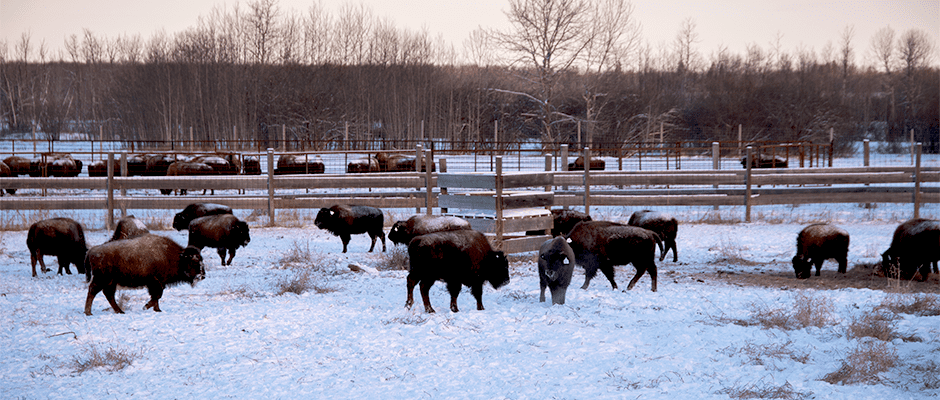Share this article
Bison reintroduced to Canada’s oldest national park
In the first week of February, 16 plains bison set foot in Banff National Park for the first time in more than a century.
Employees with Parks Canada loaded the bison (Bison bison) into shipping containers on the back of flatbed trucks at their home range in Elk Island National Park in Alberta. They then drove the trucks for 450 kilometers before airlifting the containers the final 25 kilometers by helicopter into a remote section of Canada’s oldest national park, where bison haven’t roamed for more than 140 years ago.
“Bison are actually called ecosystem engineers,” said Karsten Heuer, the bison reintroduction project manager at Banff National Park. “Because they’ve been missing, there has been a real problem in not just the absence of the physical mammal, but the absence of their ecological role. The intent is to reverse the absence and bring back a major player to the ecosystem.”
Heuer said the species’ grazing behavior helps maintain habitat for grassland-loving species of birds and amphibians. Archeological discoveries of bison bones and skulls as well as traditional stories of First Nations people provide evidence that bison historically roamed Banff.
Planning for the reintroduction effort was decades in the making. Among other preparations, Parks Canada and other scientists completed a detailed environmental analysis that examined the potential effects of bringing bison back to Banff.
“When talking about bringing [bison], the largest herbivore in Canada, to Canada’s first national park where it existed once, there are not too many negative effects,” Heuer said. However, since the land has changed since the bison were last here, Parks Canada took into consideration aspects such as adjacent land use and effects on at-risk species such as caribou.
Heuer said the project also involved consulting with a variety of stakeholders, including First Nations people, who held ceremonies for the bison when they left Elk Island and when they arrived in Banff.
The reintroduced animals will be held for 16 months in a remote 45-acre pasture in the heart of the reintroduction zone where they will be fed and monitored while they adapt to their new environment and calve twice. In June 2018, Parks Canada expects to open the gates and release them into rest of the 1,200-square-kilometer zone, where biologists will monitor the species for five years, examining factors including survival, predation rates by species like grizzlies and wolves and the bisons’ effects on vegetation.
“It’s glamorous and flashy and exciting to be flying bison, but it’s tremendously expensive and a lot to ask of these initial founder animals,” said Heuer, who said he hoped sound management can prevent the need for future reintroduction efforts of other species.
“This provides foresight to avoid the losses in the first place,” he said.
Images courtesy of Parks Canada
Header Image: Sixteen bison from Elk Island National Park were reintroduced to Banff National Park. Image courtesy of Parks Canada.









